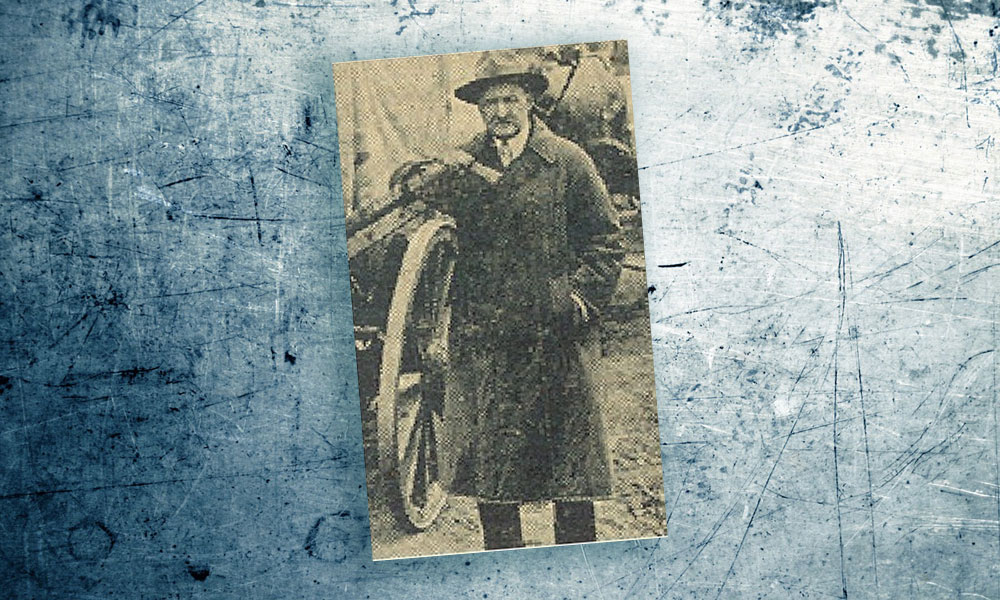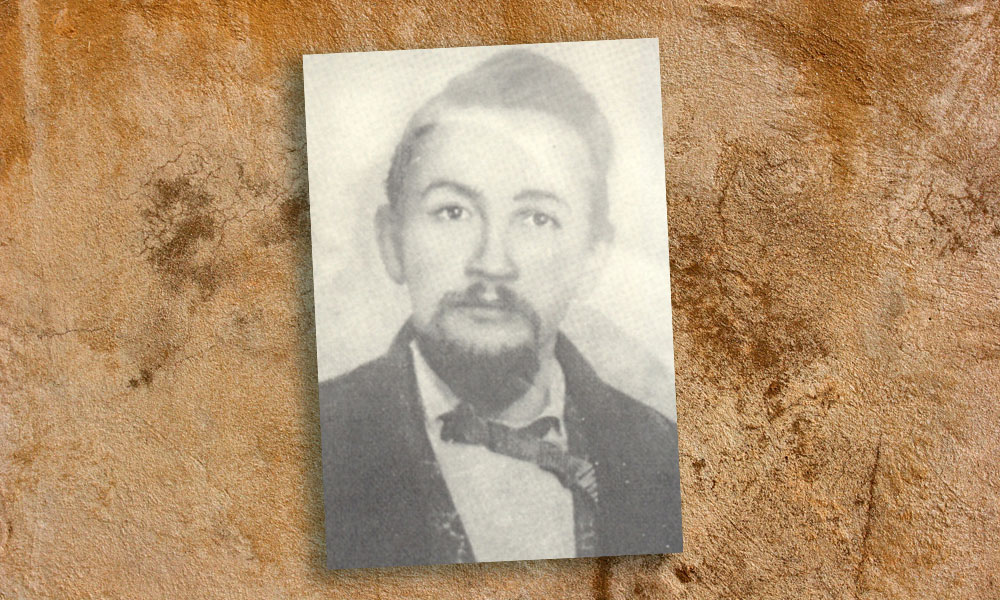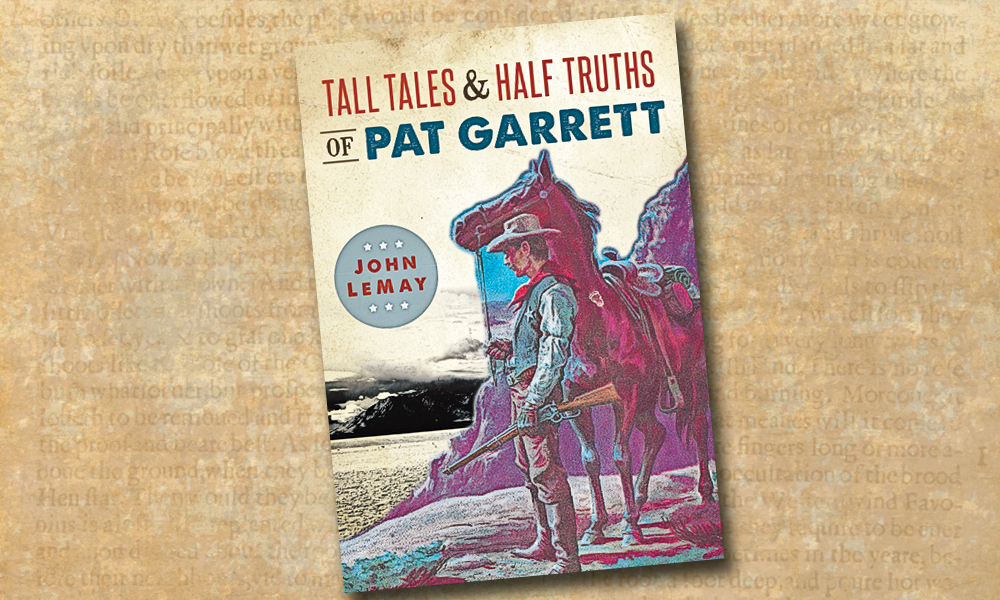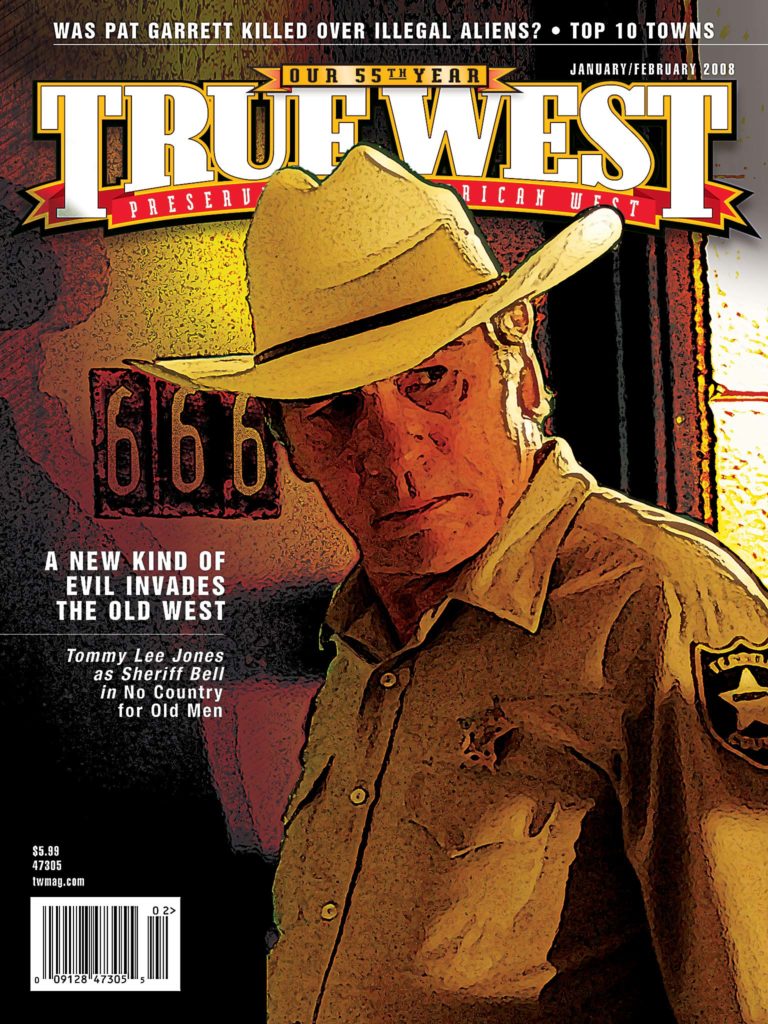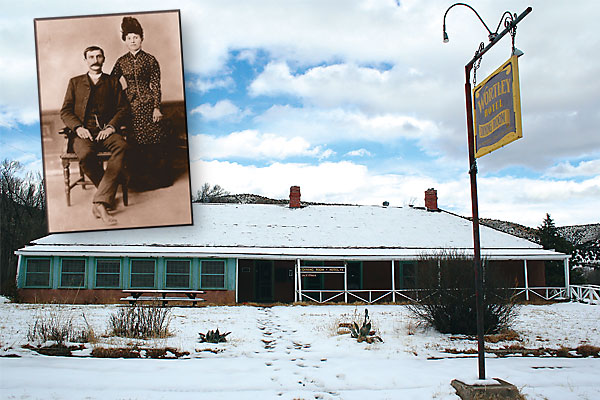
I have to use the bathroom.
More information than you need to know, but be warned: Nature’s Call can be troublesome in this part of the country. After all, the man whose trail I’m following got killed near here. “Death by irrigation,” I heard historian Fred Nolan say a while back.
Yep, it was over in Alameda Arroyo a century ago, February 29, 1908, when Pat Garrett opted to empty his bladder only to get killed in the process with a bullet in his head and another in his back. The slayer of Billy the Kid met his own demise on this patch of desert near Las Cruces, New Mexico.
Wayne Brazel, who was grazing goats on Garrett’s ranch, confessed to the killing and was acquitted in the subsequent trial by claiming self-defense. That one has always stumped me. What was Pat going to do? Pee on him? Of course, many don’t believe Brazel pulled the trigger. Some point to Carl Adamson. Others claim it was Deacon Jim Miller. A few call it a conspiracy, that Garrett was getting too close to solving the mystery of the disappearance of lawyer Albert Jennings Fountain and his young son back in 1896. Others opine that Garrett merely got his due after popping Billy in Fort Sumner in 1881.
All I can say is: There has to be a restroom somewhere around here.
Texas Swing
You know Pat. He was born in 1850 in Alabama and worked as a buffalo hunter in Texas. I started this trail in Amarillo because Pat and Billy were known to frequent nearby Tascosa, one of the wildest, wickedest Panhandle towns. It’s not so wild or wicked today. Quite the opposite (unless you count the annual rodeo in September) since Cal Farley opened his Boys Ranch in 1939 on the grounds of Old Tascosa. But Boot Hill is still around, and visitors are always welcome.
They’re also welcome down the road at the Panhandle-Plains Historical Museum in Canyon, which chronicles life on the Texas plains, life before and after Pat Garrett—the exhibits span some 500 million years of history—and events that helped shaped his life, with permanent exhibits dedicated to firearms and a Pioneer Town complete with a saloon. We all know Pat spent
too much time in saloons. That’s why he had to pledge to abstain from hooch before Teddy Roosevelt would give him a job as customs collector.
By the Rio Grande
That happened down in El Paso, the next stop on the Pat Garrett Trail.
Teddy appointed Pat customs collector in El Paso in 1901, which was approved in 1902, and Pat served until running into trouble in 1905. Pat and a notorious gambler pal posed in a group photo with the prez during a San Antonio Rough Riders’ reunion (see p. 37). The resulting bad PR cost Pat the friendship of Teddy and, eventually, Pat’s job.
El Paso is full of museums, Mexican food and Marty Robbins music, but you won’t find a whole lot dedicated to Pat. The customs house is long gone. So are the places Pat lived—the Sheldon Hotel and houses on Ange, Montana and West Olive—county historical commission chair Bernie Sargent tells me. And speaking
of Marty “El Paso” Robbins, he sang a ballad about Billy the Kid, not Pat. That’s what you’ll find often on the Pat Garrett Trail. Pat’s always in Billy’s shadow. It’s a Billy conspiracy!
With his career washed up (again) in El Paso, Pat returned to his ranch in New Mexico. Which is where most of us know Patrick Floyd Jarvis Garrett.
In 1880, Pat got the job of Lincoln County sheriff and the chance to bring Billy to justice. Maybe Pat and Billy were pals. They certainly knew each other during Pat’s earlier career pouring drinks as a bartender. But bosom buddies? It makes for good movies—okay, mediocre movies—but a deep friendship has never been historically linked to the two. They are definitely linked together in Lincoln.
Honest Lincoln
The Lincoln County Courthouse has been turned into a museum. In fact, the whole town is a museum. You can grab a bite to eat or hang your hat at the Wortley Hotel across the street, walk down to the store owned by Billy the Kid’s former boss, John Tunstall, or check out the Anderson Freeman Visitor Center for a great history lesson on the Lincoln County War.
In December 1880, Pat captured Billy near Taiban and—after a trial in Old Mesilla for the murder of Sheriff William Brady during the Lincoln County War—housed him in the second story of this courthouse awaiting execution. On April 18, 1881, however, Billy broke loose, killing deputies James Bell and Bob Olinger, and lighting a shuck north.
Pat was in White Oaks, either collecting taxes or finding lumber for Billy’s gallows, so I’m off to this ghost town near Carrizozo.
Welcome to White Oaks
The discovery of gold in 1879 turned White Oaks into a boomtown, and historians say its brothels and gambling dens attracted Pat, Billy and many others. Today, White Oaks has been reduced to a ghost town, but it’s home to a historic cemetery (Cedarvale) that claims the final resting places of unfortunate deputy James Bell as well as Lincoln County War notable Susan McSween Barber. Thirsty? Have a drink at the No Scum Allowed Saloon. Unless you’re scum.
Eventually, Billy landed at Fort Sumner, and so did Pat. It proved good for Pat, not so good for Billy. On July 14, 1881, Pat stopped at Pete Maxwell’s place while looking for Billy. He found him. That was the end of Billy.
And, pretty much, the end of Pat, whose career rolled downhill afterward.
Billy’s Fort Sumner
Maxwell’s house, part of the old military post, is long gone, but Billy is here, buried somewhere behind the Old Fort Sumner Museum. (Expert Frederick Nolan does not believe the Kid is buried beneath the stone that carries the outlaw’s name.) Billy is also honored at the Billy the Kid Museum. You won’t find any Pat Garrett museums.
Go figure. They celebrate Billy in Lincoln. They celebrate Billy in Fort Sumner. They celebrate Billy at Puerto de Luna, a picturesque village between Fort Sumner and Santa Rosa where they’ll point out where Billy spend the night at the Grezelachowski store. (Pat was there too!)
In fact, you can find many places where Billy spent the night in New Mexico. From Anton Chico (where Pat got married) to Las Vegas (where Pat put Billy on the train and quelled a lynch mob) and down to Santa Fe (where Pat made friends with Billy’s enemies), it’s all about Billy.
Billy … Billy … Billy…. And Pat?
Heck, were Pat alive today, they might not even let him in the No Scum Allowed Saloon.
The Great Mystery
As I head to Alamogordo to visit White Sands National Monument and Oliver Lee Memorial State Park, I discover it’s not so much Billy down here, but it’s also not Pat.
In 1896, Col. Albert Jennings Fountain and his eight-year-old son Henry disappeared near White Sands, forcing Pat out of retirement to pin on the badge of Doña Ana County sheriff. He plodded along to solve the murder—everyone knew Fountain and Henry had been murdered, even if the bodies were never found—and attempted to bring suspected killers William McNew, Oliver Lee and James Gilliland to justice.
After Garrett’s posse arrested McNew, it caught up with Lee and Gilliland at Wildy Well near Oro Grande, south of Alamogordo, on July 12, 1898. Good for Lee and Gilliland. Not so good for Garrett and deputy Kurt Kearney. During the gunfight, Kearney was killed and Garrett had to retreat, allowing Lee and Gilliland to remain free men … for the time being.
So what do I find in these parts? No Pat Garrett tribute, but a state park dedicated to Oliver Lee and his restored Dog Canyon Ranch. Flooding prevents me from touring the ranch, but I can spend a lovely afternoon exploring the White Sands—275 square miles of gypsum dunes and, maybe, somewhere out here, rest the remains of poor Col. Fountain and little Henry.
Nope, Pat just doesn’t get respect.
Over in Mesilla, I visit a Billy the Kid gift shop on the Plaza, site of the Kid’s 1881 murder trial. Then I shoot up north to the ghost town of Hillsboro, where in 1899, Lee and Gilliland were finally brought to trial, and Pat took center stage again.
Good for Lee and Gilliland. Not so good for Garrett.
In the Black Range
The county courthouse has been reduced to ruins, and few call Hillsboro home these days. Yet the town springs to life with tourists galore during the Apple Festival on Labor Day weekend, and what was once Sadie Orchard’s Ocean Grove Hotel has been transformed into the Black Range Museum.
But back to Pat.
Testimony in the trial began on May 29, 1899, with Garrett testifying for the prosecution June 1-2. Although the trial lasted more than two weeks, it took the jury only seven, maybe eight, minutes to acquit Lee and Gilliland. Lee would serve two terms in the state senate in the 1920s, and get that park named after him.
And Pat?
That’s all
Well, the end of the trail takes me back to Las Cruces, where Pat’s body is buried in the Masonic Cemetery. His grave doesn’t bring in the tourists that Billy’s does in Fort Sumner.
On that fateful day 100 years ago, Garrett was on his way to Las Cruces, arguing with Brazel about goats, when he met his demise.
Poor Pat. He gets a historical marker along Highway 70 between Las Cruces and San Augustin Pass. Cars zip along the highway without stopping, but I bet they’d stop if they thought Billy slept here.
Now, if I can just find a bathroom.
Johnny D. Boggs knows why the Pat Garrett action figure by Marx is shorter than the Billy the Kid action figure by Six Gun: another Billy conspiracy!


